
Roots
Have you ever held a comb, feeling the familiar glide through your strands, and paused to consider the silent stories it carries? For those of us with textured hair, this daily ritual often connects to something far older, a deep inheritance woven through generations. The very materials of early combs hold a forgotten lexicon, a set of cultural meanings whispered from ancestors, from the earth itself.
These simple implements, crafted from the bone, wood, and ivory of ancient landscapes, were never merely tools for detangling or styling. They were extensions of identity, conduits of spiritual belief, and tangible markers of social standing within societies that revered hair as a vital aspect of being.
To truly comprehend the profound cultural meaning embedded in early comb materials for textured hair heritage, we must peel back layers of time, tracing paths from primordial practices to the complex scientific understanding we possess today. It is a journey where biology and belief intertwine, revealing how the very fibers of our hair dictated the form and function of these ancestral instruments, and how, in turn, these instruments shaped the living traditions that endure.
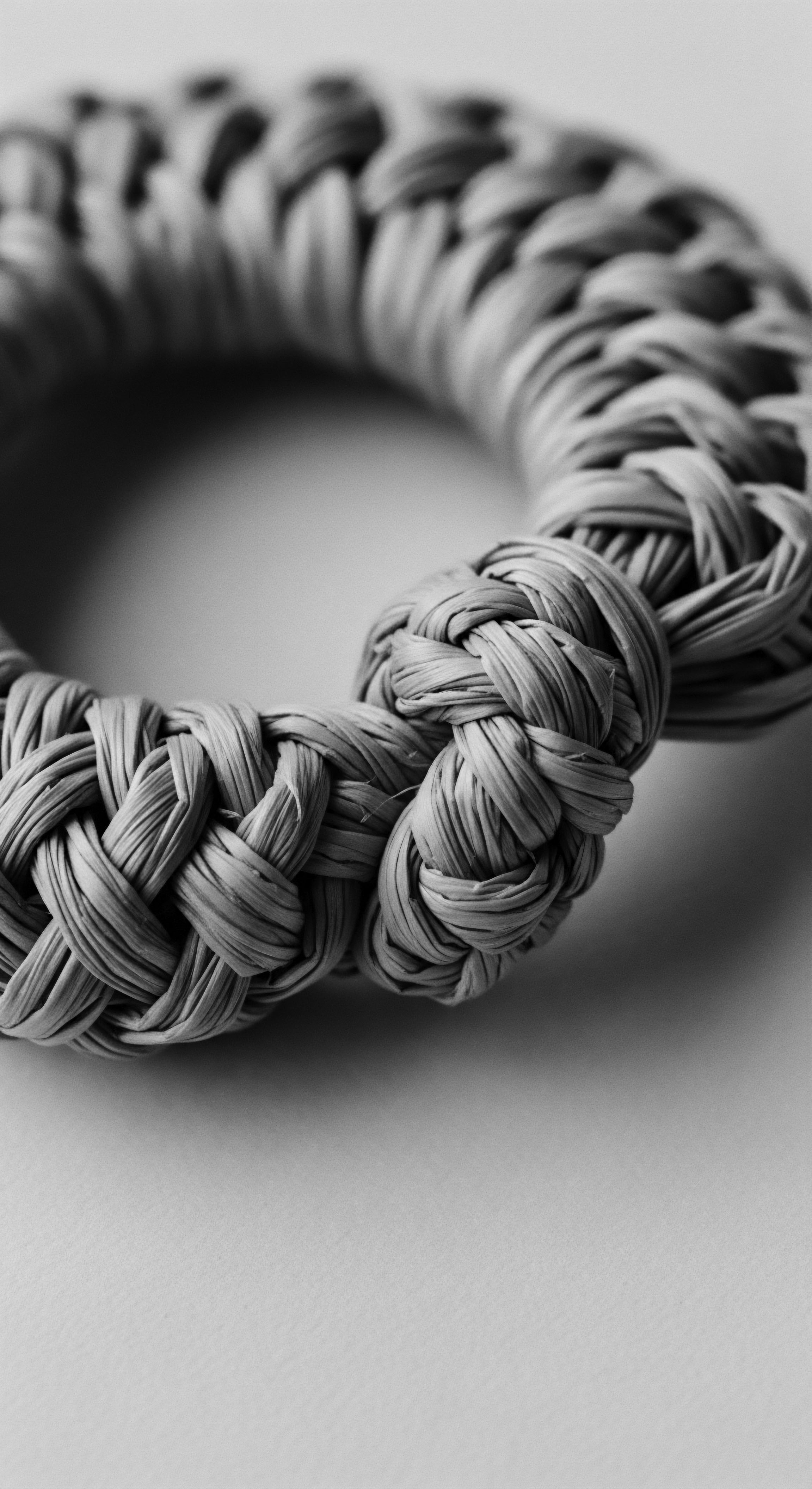
Hair Anatomy and Its Ancestral Considerations
The unique coiled and curled structure of textured hair, often referred to as kinky, coily, or curly, presents distinct physiological characteristics that influenced the design and material choice of early combs. Unlike straighter hair types, textured strands possess an elliptical or flattened cross-section, contributing to their remarkable elasticity and propensity to form intricate patterns. This shape also means the cuticle layers, the protective outer scales of the hair shaft, are more exposed at the curves, making textured hair more susceptible to dryness and mechanical damage if handled improperly. Ancestral communities, long before modern scientific classification, understood these inherent qualities through lived experience.
They observed how hair interacted with various substances and pressures, informing their craftsmanship of hair tools. The earliest combs, often wide-toothed, were a direct response to the need to navigate these curls gently, minimizing breakage while distributing natural scalp oils.
The physiological makeup of textured hair, from the density of follicles on the scalp to the varying porosities of individual strands, demanded a sympathetic approach to care. Early comb makers, through generations of observation, understood the necessity of materials that would not snag or strip the hair. They favored smooth, often polished surfaces, intuitively recognizing what modern science now validates ❉ a lower coefficient of friction reduces cuticle damage. This practical knowledge, honed over millennia, is a cornerstone of textured hair care, passed down through the very design of these tools.

Textured Hair Classification and Cultural Understandings
While contemporary systems classify textured hair by curl pattern, density, and porosity, ancestral communities held their own, often more holistic, systems of understanding hair. These early classifications were rarely clinical; they were deeply rooted in cultural context, social roles, and spiritual beliefs. A specific curl pattern might signify tribal affiliation, marital status, or a life stage.
The way hair was grown, styled, or adorned, and the tools used to achieve these expressions, were integral to these identity markers. Early comb materials played a quiet but critical role in these visual languages.
Consider the wide-tooth comb, a form seen across millennia of African history, particularly those from Ancient Egypt (Kemet) dating back over 5,500 years. These combs, crafted from materials like ivory, wood, and bone, consistently displayed broader spacing between their teeth compared to contemporary European combs (Ashton, 2016). This design choice was not accidental; it reflected a practical and culturally informed understanding of textured hair’s needs for gentle detangling and manipulation. This shared functional design across different African regions suggests a continuous, ancestral knowledge system regarding textured hair care.
Early comb designs directly reflect ancestral understanding of textured hair’s unique physiological needs.
The materials themselves, from hardened animal bone to carefully smoothed wood, carried weight beyond their utility. They were selected for their durability, their natural alignment with the body, and sometimes, for the symbolic power inherent in the animal or plant from which they came. For instance, combs adorned with images of giraffes or ostriches in Predynastic Egypt were not only decorative but might have connected the wearer to ritualistic practices or the spiritual world (Robins, 2008).

Lexicons of Ancient Hair Tools
Our contemporary language for textured hair, while evolving, often misses the ancestral resonance held within traditional terminologies for hair and its implements. In many African cultures, the very act of hair grooming and the tools involved were steeped in specific, often sacred, lexicons. The words used to describe combs were not generic; they conveyed origin, purpose, and cultural standing.
- Ìlàrí ❉ A Yoruba term, specifically referring to a parting comb, highlighting its ceremonial precision in creating distinct sections for elaborate hairstyles.
- Ìyàrí ❉ Another Yoruba term, used more generally for a comb, indicating its everyday, yet still respected, utility.
- Duafe ❉ An Adinkra symbol of the Akan people of Ghana, literally meaning “wooden comb,” embodying feminine virtues such as patience, prudence, and care (Owusu-Ansah, 2007). This symbol itself was often carved into actual combs.
These terms illustrate that combs were not just anonymous objects. They were named, revered, and their use was sometimes regulated by societal or spiritual protocols. The importance of the onídìrí (Yoruba hairdresser) and the greetings bestowed upon them, such as “ojú gbooro o,” wishing them success in making good hair partings, underlines the societal respect for both the craft and its instruments (Akanbi, 2023). The material of the comb – whether bone, ivory, or a specific type of wood – was inherent to its identity and function within these linguistic and cultural frameworks.
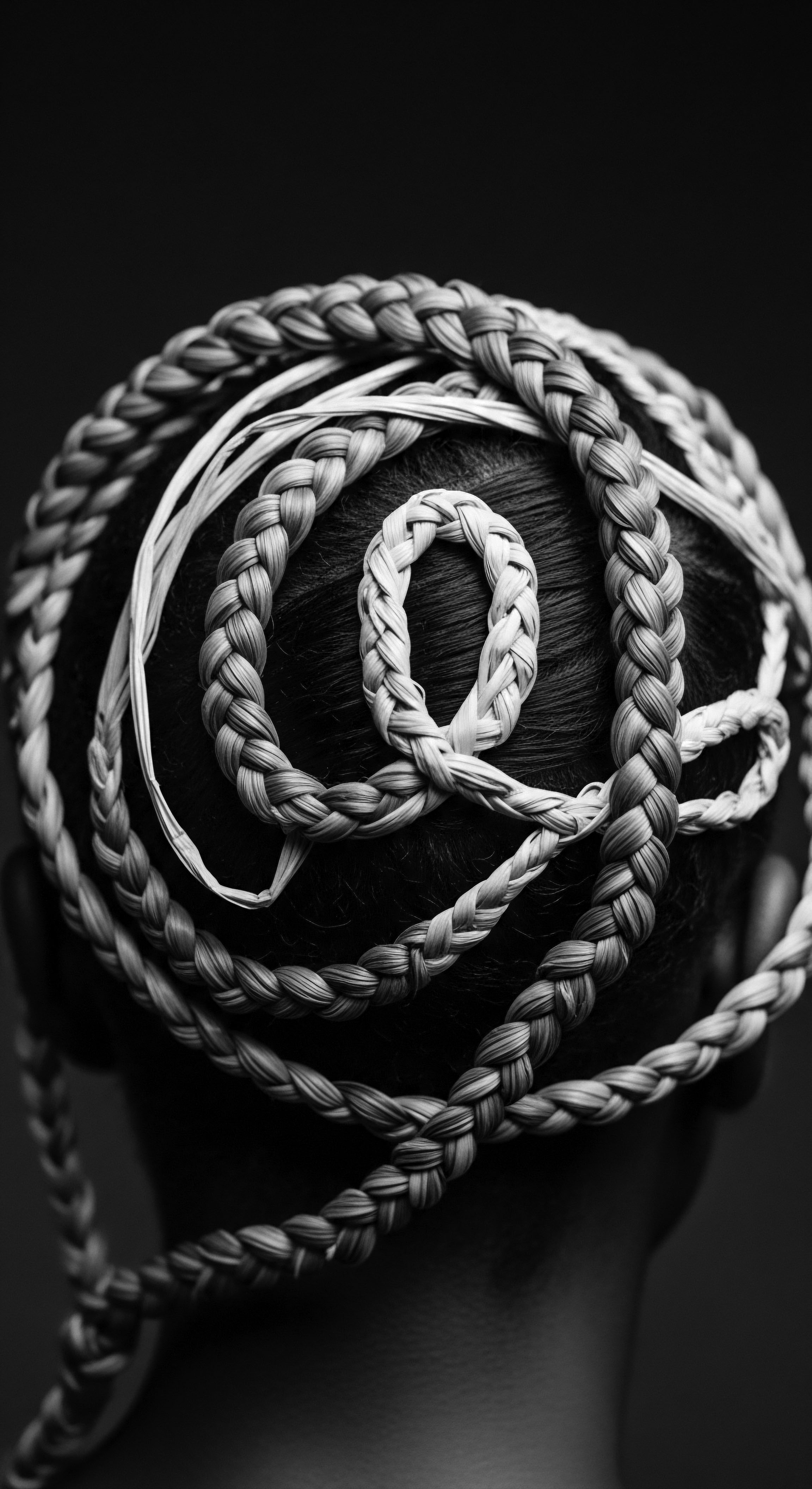
Hair Growth Cycles and Historical Influences
The cyclical nature of hair growth, from its active anagen phase to resting telogen, was perhaps not scientifically understood in ancient times, but its practical implications certainly were. Environmental factors, nutrition, and overall health significantly affect hair vitality. Ancestral practices often incorporated elements that intuitively supported healthy growth and minimized damage.
Early comb materials, beyond their symbolic value, played a role in maintaining scalp health. Wooden combs, for instance, are known to distribute natural oils from the scalp along the hair shaft more effectively than modern plastic alternatives, preventing static and promoting overall hair health (Choudhury, 2024). This property, recognized and valued by ancient communities, contributed to the longevity and strength of textured hair, which is naturally prone to dryness.
The choice of specific woods, some with perceived medicinal properties like Neem wood, further demonstrates an intuitive understanding of bio-compatibility between the comb and the hair’s physiological needs (Choudhury, 2024). This historical knowledge, embedded in the very materials chosen for combs, highlights a sophisticated, albeit unwritten, science of hair care that spans millennia.
| Material Type Wood (Sandalwood, Neem) |
| Ancestral Use/Meaning Widely accessible, naturally distributes oils, often carved with cultural motifs. |
| Contemporary Scientific Link Reduces static, prevents breakage, gentle on cuticle, beneficial for scalp circulation and oil distribution. |
| Material Type Bone (Animal bone) |
| Ancestral Use/Meaning Durable, readily available, often found in ancient burials, sometimes representing ancestral connections. |
| Contemporary Scientific Link Smooth surface minimizes friction, robust for detangling dense hair, long-lasting. |
| Material Type Ivory (Elephant tusk) |
| Ancestral Use/Meaning Symbol of elite status, wealth, and power, intricately carved with spiritual figures. |
| Contemporary Scientific Link Dense, smooth material, less prone to static, provided strength for styling without excessive tugging. |
| Material Type Horn (Ox horn) |
| Ancestral Use/Meaning Naturally absorbent, believed to distribute hair's natural oils, unique patterns. |
| Contemporary Scientific Link Absorbs and evenly distributes sebum, conditions hair, reduces frizz, and is gentle on the scalp (Antica Barbieria Colla, 2024). |
| Material Type The enduring utility of these materials for textured hair speaks to the profound ancestral knowledge passed down through the very objects themselves. |
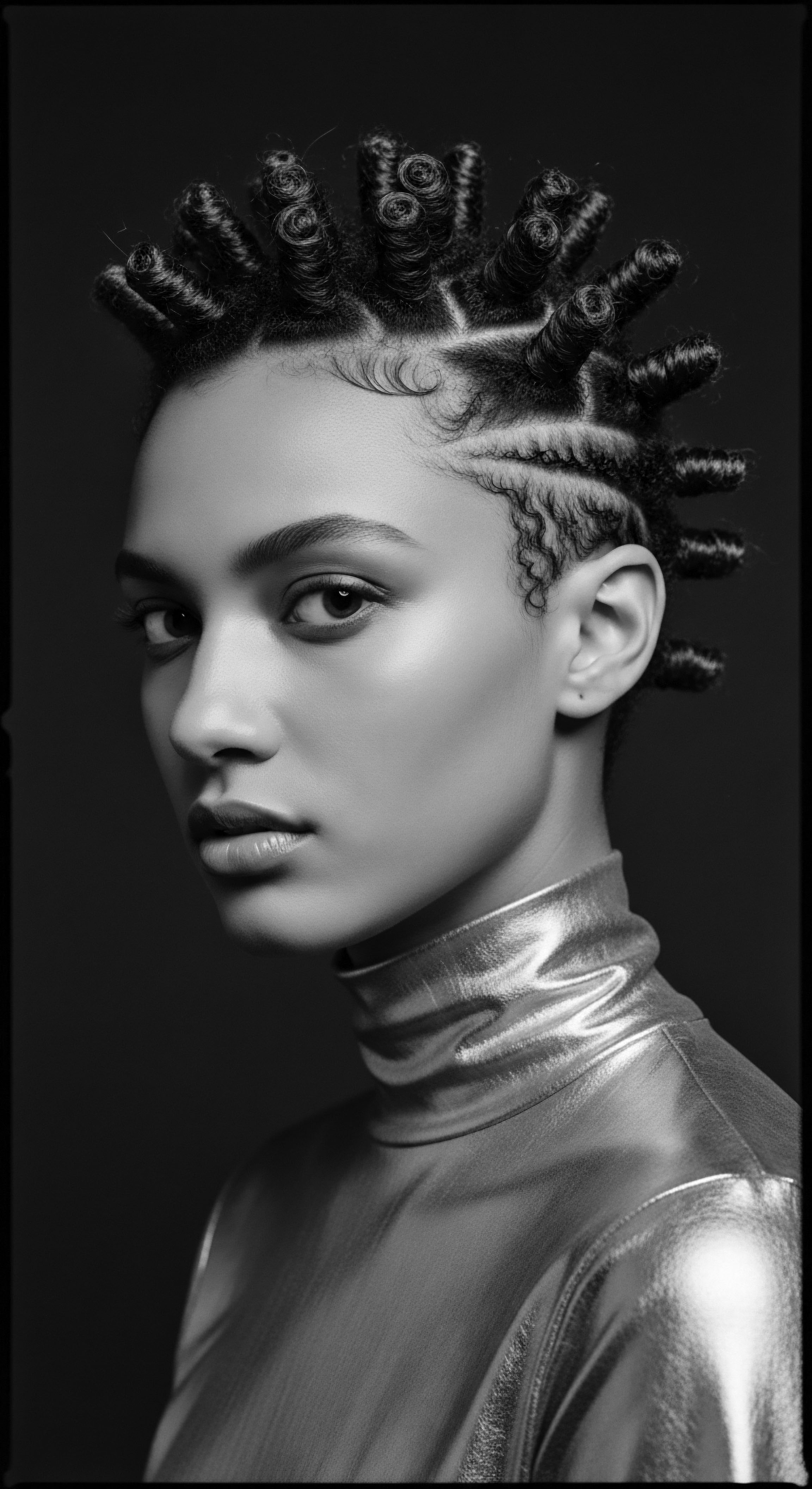
Ritual
Beyond their elemental composition, early comb materials became deeply woven into the daily rituals and grand ceremonies that defined heritage. These tools were not inert objects; they were active participants in the artistry of textured hair styling, facilitating transformations that mirrored personal and communal narratives. The rhythmic act of combing, often a communal experience, became a tender thread connecting individuals to shared identity and ancestral practices. The choice of material for a comb, its form, and its adornment were all deliberate, each carrying a particular weight within these stylized practices.
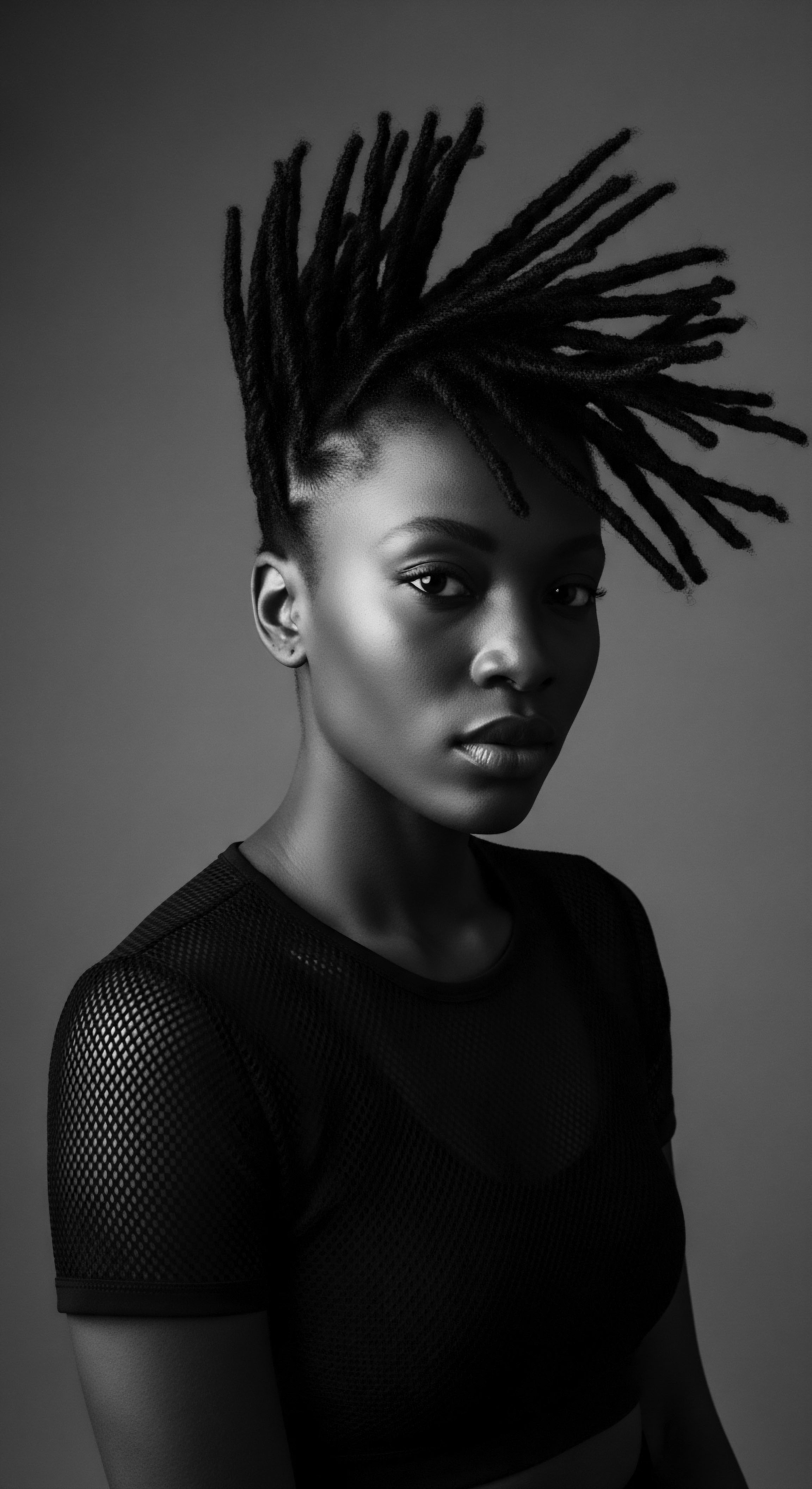
Protective Styling and Ancestral Roots
Protective styling, a cornerstone of textured hair care today, possesses roots stretching back into antiquity, a heritage deeply connected to the very combs employed. Braids, twists, and locs were not merely aesthetic choices in pre-colonial African societies; they served as visual languages communicating social status, age, marital standing, and even tribal affiliation (BLAM UK CIC, 2022; Assendelft, 2024). The creation of these intricate styles required specific tools that could part, section, and smooth hair effectively without causing damage. Early combs, particularly those with long, well-spaced teeth fashioned from wood or bone, were indispensable for these practices.
The materials themselves contributed to the protective quality of these styles. Smooth wooden combs, for example, would glide through hair, minimizing friction and preventing the cuticle lifting that leads to breakage. This gentleness was critical when manipulating hair into complex, long-lasting styles designed to protect the strands from environmental elements and daily wear. The comb, therefore, was not just a tool; it was an extension of the stylist’s hand, embodying the care and precision required for styles that held significant communal meaning.

Natural Styling and Defining Techniques
The celebration of natural textured hair is a return to an ancestral norm, a practice where early comb materials held sway. Long before chemical processes, communities relied on natural techniques to define and enhance curl patterns. These techniques often involved the careful application of natural oils, butters, and clays, which would then be worked through the hair using combs. The material of the comb directly influenced the effectiveness of these practices.
Consider the use of horn combs. Unlike plastic, horn is a natural material that can absorb and then redistribute the natural oils present in the hair, aiding in the conditioning process (Antica Barbieria Colla, 2024). This property would have been invaluable in ancient rituals focused on nourishing and enhancing hair’s natural sheen.
The comb became a conduit for wellness, working in concert with the body’s own oils and external natural ingredients. The precise spacing of a comb’s teeth, dictated by the material and craftsmanship, would determine the level of curl definition achieved, creating styles that spoke volumes about personal identity within a communal context.
Combs were not just for grooming; they were integral to ancestral communication and visual storytelling through hair.
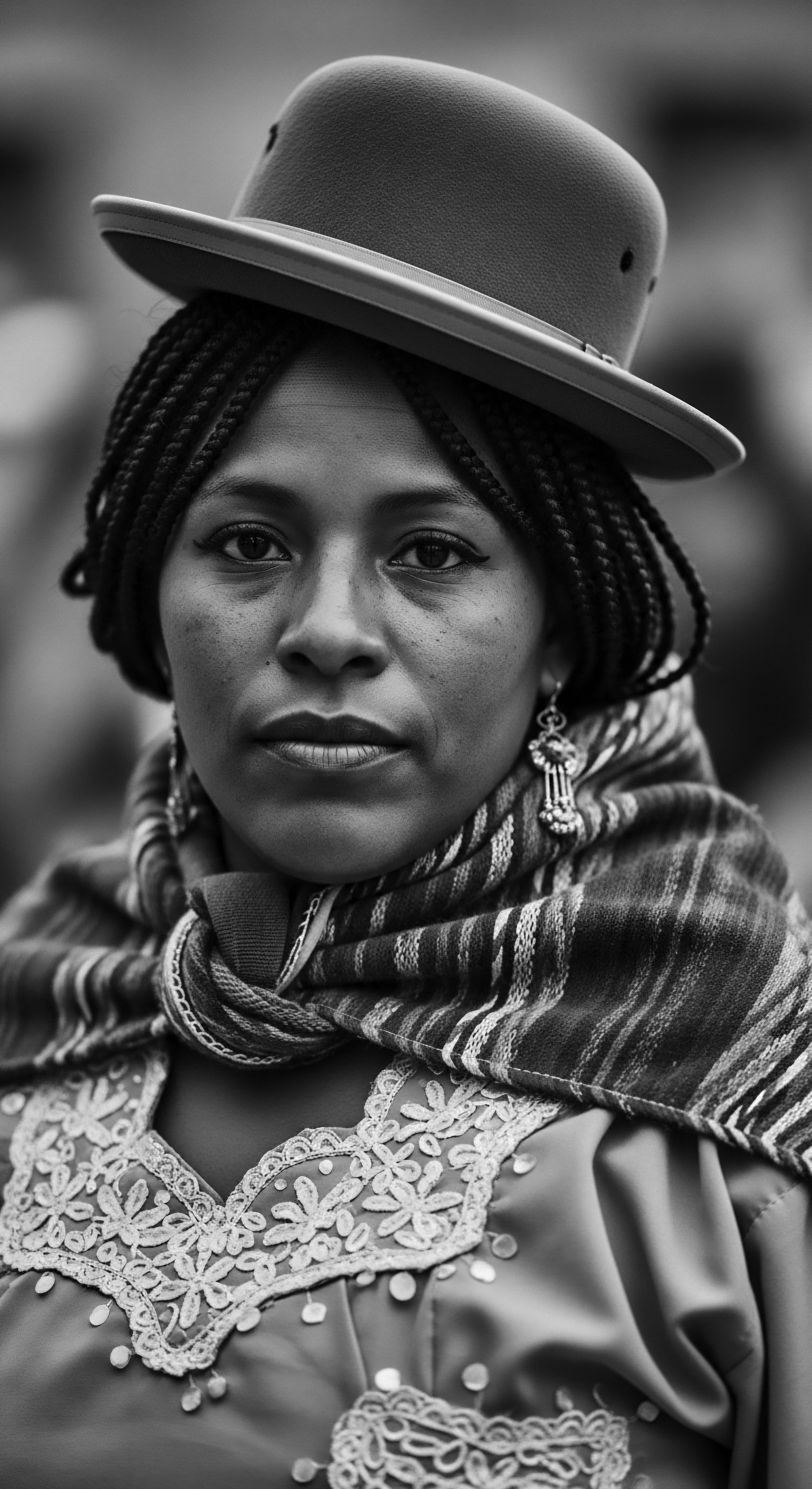
Wigs, Extensions, and Historical Context
The use of wigs and hair extensions also has a profound heritage, particularly in Ancient Egypt, where they were prevalent among all genders and social classes as early as 3400 BCE (Robins, 2008). These elaborate creations required specialized tools for their crafting and maintenance. While archaeological records primarily show combs used for natural hair and scalp care, it is plausible that similar finely crafted combs of ivory or wood assisted in preparing the natural hair beneath wigs, or in styling the wigs themselves.
The materials of these combs, often precious ivory for the elite, mirrored the investment in wigs, which were made from human hair or plant fibers and set with beeswax and animal fat (Robins, 2008). The tools for grooming the body and its adornments were often of a piece with the social status they conveyed. The presence of elaborate, decorative combs in tombs further highlights their ceremonial and symbolic status, suggesting they were considered essential even in the afterlife (Robins, 2008; TikTokgoodshop, 2024).

Heat Styling and Ancestral Methods
While modern heat styling involves sophisticated tools, ancestral methods for altering hair texture, often temporary, likely involved simpler forms of heat application. It is less direct how combs, particularly those made of wood or bone, interacted with these processes beyond aiding in the initial sectioning and later detangling. However, understanding the thermal properties of different comb materials provides insight into why certain practices evolved.
Plastic combs, prone to melting with heat, were not a concern in antiquity. Wooden combs, being non-conductive, would have been safer for use near any primitive heat sources used for drying or setting.
The absence of static electricity with natural materials like wood and horn (Antica Barbieria Colla, 2024) would have been a significant advantage. This property minimizes frizz, a common challenge for textured hair, particularly when subjected to heat. The careful selection of natural materials for combs, therefore, indirectly supported hair health even in the context of primitive thermal treatments.

The Complete Textured Hair Toolkit
An exploration of the early textured hair toolkit reveals a fascinating array of combs, each material chosen for specific attributes, and each holding cultural significance. These tools were not mass-produced; they were often handcrafted, embodying the skill and reverence of the artisan.
The Wide-Tooth Pick ❉ Often crafted from wood or bone, this form is arguably one of the most ancient and enduring designs for textured hair, tracing its lineage back to Predynastic Egypt (Ashton, 2016). Its long, widely spaced teeth made it ideal for detangling dense, coily hair without causing excessive pulling or breakage.
Carved Ivory Combs ❉ Found in ancient Egyptian burials, these were symbols of elite status and were often adorned with animal motifs, connecting the wearer to ritualistic hunting or spiritual power (Robins, 2008; The Metropolitan Museum of Art, 2024). Their smooth, dense surface provided a gentle glide through the hair.
Decorated Wooden Combs ❉ Across West Africa, wooden combs were not only functional but also art pieces. The Akan people of Ghana, for instance, used combs decorated with Adinkra symbols like the Duafe, representing femininity, care, and patience (Owusu-Ansah, 2007). These combs served as personal adornments, declarations of love, or marriage gifts (WordPress.com, 2013).
The materials were chosen for both their practical utility and their symbolic weight, creating tools that were simultaneously everyday objects and sacred artifacts.
- Functional Precision ❉ Early comb materials, like the smooth surfaces of wood and horn, were chosen for their ability to glide through textured hair, minimizing static and breakage.
- Artistic Expression ❉ Ivory and bone combs often served as canvases for intricate carvings, reflecting social status, spiritual beliefs, or tribal identity through their decorative elements.
- Symbolic Power ❉ The animal motifs or Adinkra symbols carved into combs imbued them with ritualistic properties or conveyed specific virtues, making them more than mere grooming instruments.
- Cultural Continuity ❉ The enduring design of wide-tooth combs from ancient Kemet to modern afro combs demonstrates a continuous line of ancestral knowledge regarding textured hair care.

Relay
The knowledge carried within early comb materials flows like an ancient river, nourishing our understanding of textured hair heritage, connecting past wisdom to present practices. The exploration of these ancestral tools transcends simple historical curiosity; it provides a framework for comprehending holistic care and problem-solving, deeply rooted in the collective wisdom of those who came before us. This continuity, a living archive of ingenuity and resilience, reveals how the materiality of a comb became a conduit for ancestral traditions and a silent statement of cultural identity.

Personalized Regimens Reflecting Ancestral Wisdom
Building a personalized textured hair regimen today, one that truly nurtures the hair, benefits from observing the echoes of ancestral practices. Early communities instinctively understood that hair health was intertwined with overall well-being and local resources. The materials chosen for combs were often those readily available in their environment—woods from indigenous trees, bones from local animals, or precious ivory obtained through trade (The Fitzwilliam Museum, 2013). This localized approach meant that hair care was inherently sustainable and deeply connected to the natural world.
Ancestral wisdom, embodied in the simple comb, recognized that a comb’s material could either harm or help. The preference for smooth, natural materials over rough, abrasive ones demonstrated an intuitive scientific understanding of the hair cuticle’s delicate nature. This gentle philosophy, passed down through generations of tactile experience, reminds us that the best regimens are not rigid formulas, but adaptable systems responsive to individual hair needs and environmental context, much as ancestral practices were.
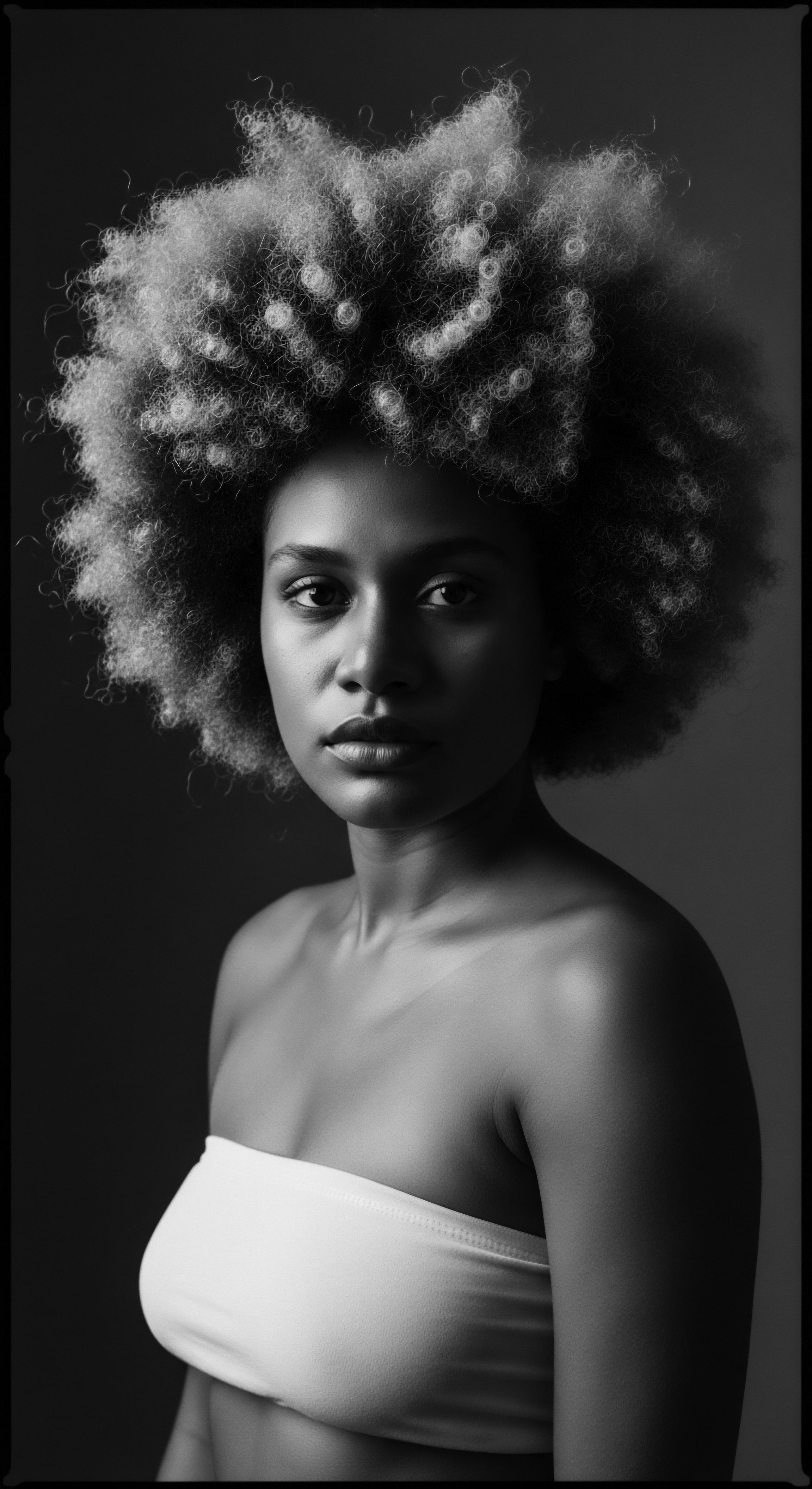
Nighttime Sanctuary and Bonnet Wisdom
The wisdom of protecting textured hair during rest, evident in the widespread use of modern bonnets and wraps, finds its lineage in ancient care rituals. While direct archaeological evidence of “bonnets” is scarce for the earliest periods, the cultural significance of preserving hairstyles and maintaining hair integrity suggests practices to protect hair during sleep were commonplace. Elaborate hairstyles, often taking hours or days to create and carrying profound social meaning, would naturally necessitate protection to prolong their life and symbolic power (BLAM UK CIC, 2022).
It is here that the comb’s role extends beyond daily grooming. Its careful use before wrapping or braiding hair for the night would have prepared the strands, minimizing tangles and reducing friction. The inherent smoothness of materials like polished wood or bone, as seen in ancient combs, contributed to this protective function, preventing hair snagging or breakage that would compromise the nightly preservation. The continuity of hair protection through the night underscores a deep, ancestral respect for hair’s vitality and its cultural value.

Ingredient Deep Dives and Traditional Comb Interaction
The ingredients used in ancestral textured hair care often derived from local flora and fauna, and their application frequently involved combs. Oils, plant extracts, and even clays were worked through the hair, providing moisture, conditioning, and scalp treatment. The material of the comb influenced how these ingredients were distributed.
For example, horn combs, with their natural ability to absorb and evenly redistribute oils from the scalp and applied products, acted as natural conditioners (Antica Barbieria Colla, 2024). This characteristic makes them a superior choice for delivering moisturizing ingredients throughout textured strands, which are prone to dryness. Similarly, wooden combs, particularly those made from specific trees like Neem, were prized not only for their gentle detangling properties but also for their perceived medicinal benefits, suggesting a deeper interaction between the comb’s material and the health-promoting properties of traditional ingredients (Choudhury, 2024).
The comb, more than a simple tool, acted as a cultural conduit, transmitting ancestral wisdom and shaping collective identity.

Textured Hair Problem Solving Compendium
Ancient communities faced hair challenges that mirror some we encounter today ❉ dryness, tangles, breakage, and scalp irritation. Their solutions, often simple yet profoundly effective, relied heavily on the design and material of their combs. The prevalence of wide-tooth combs in ancient African civilizations (Ashton, 2016) is direct evidence of an effective, time-tested solution for detangling dense, textured hair with minimal damage. This design choice, intuitively understood, prevented the pulling and tearing that finer-toothed combs might cause, preserving the hair’s integrity.
A powerful illustration of this continuity and ingenuity lies in the archaeological record ❉ The discovery of combs, particularly from Predynastic Egypt (Kemet), reveals a design with teeth notably wider apart than those found in contemporary European cultures (Ashton, 2016). This functional adaptation, observed across millennia and vast geographical expanses, from ancient Egyptian burial sites to the 17th-18th century Dawu combs of Ghana, and even influencing the design of the 1970s Afro comb, speaks to a deeply ingrained understanding of textured hair’s unique needs (Ashton, 2016). It is a testament to the enduring ancestral knowledge that prioritized gentle care, minimizing breakage and static, a concern validated by modern hair science. This specific design feature, consistently present across diverse time periods and regions, points to a shared, inherited wisdom for navigating textured strands, demonstrating that the form of the comb itself carried a solution to inherent challenges.
(Ashton, S. A. 2016. Combs from Kemet ❉ further thoughts on ancient Egyptian hair combs. The Fitzwilliam Museum, Cambridge)
Beyond detangling, combs were likely used to stimulate the scalp, promoting circulation, and distributing natural oils—a practice that addressed dryness and contributed to healthy growth. The smooth, non-porous nature of some comb materials would also make them easier to clean, promoting hygiene and preventing scalp issues, a simple yet critical solution in environments without modern sanitization.

Holistic Influences on Hair Health
For many ancestral cultures, particularly in Africa, hair was considered more than just a physical attribute; it was a profound spiritual and social extension of the self (BLAM UK CIC, 2022). The head, often viewed as the highest point of the body and a spiritual gateway, was treated with immense reverence (CurlyTreats, 2025). The tools used for its care, including combs, therefore possessed spiritual and ritualistic properties (The Fitzwilliam Museum, 2013).
In Yoruba culture, for instance, the concept of orí inú (spiritual head) is as vital as orí òde (physical head), making hairstyling a sacred process associated with deities like Ọ̀ṣun, who is believed to be the first to use a comb and the first hairdresser (Akanbi, 2023; Bakare, 2023). This intertwining of hair care, spirituality, and tools elevated the comb from a mere utility to a sacred artifact, a medium through which well-being, destiny, and ancestral connections were affirmed. The materials of these combs—whether carved with symbols of power, animals with mythical associations, or simply blessed through ritual—became vessels of this holistic philosophy, carrying deeper meanings that resonated through generations.

Reflection
To hold an early comb, to trace the remnants of its form, is to grasp a tangible connection to generations past, to a heritage etched not only in the hair it once groomed but in the very material from which it was born. These objects, simple in concept, were profoundly complex in their cultural meaning for textured hair traditions. They speak of ingenuity, adapting available natural resources—wood, bone, ivory, horn—to the specific, often delicate, needs of coily and kinky hair. They whisper of status, identity, and tribal belonging, where a comb’s carving or its precious material could convey an entire life’s story.
But more than that, these combs embody a deep, quiet reverence for textured hair itself. They represent an ancestral understanding that hair is a living, breathing archive; a locus of spiritual power; a canvas for artistic expression; and a potent symbol of resilience. From the earliest wide-toothed picks found in Kemet, designed with an intuitive grasp of curl patterns, to the carved wooden combs carrying Adinkra symbols of wisdom and care, each artifact transmits a philosophy of gentle, mindful attention. This enduring legacy, passed through the simple act of combing, reminds us that the care of textured hair is not merely cosmetic; it is an act of honoring lineage, a soulful meditation on the strand’s profound journey through time.

References
- Akanbi, O. (2023). Hairdressing and Hairstyles in Yorubaland ❉ History, Nature, Dynamics and Significance. Journal of Humanities and Social Sciences Studies, 5(1), 163-176.
- Antica Barbieria Colla. (2024). HORN COMB. Retrieved from Antica Barbieria Colla Shop
- Ashton, S. A. (2016). Combs from Kemet ❉ further thoughts on ancient Egyptian hair combs. The Fitzwilliam Museum, Cambridge.
- Assendelft. (2024). Pre-Colonial African Hairstyles ❉ A Journey Through Time and Culture. Retrieved from Assendelft
- Bakare, M. (2023). Hair in the Yoruba culture. NigerianFluency.
- BLAM UK CIC. (2022). The History of Black Hair. Retrieved from BLAM UK CIC
- Choudhury, N. (2024). From Ancient Rituals to Modern Haircare ❉ Exploring the Timeless Appeal of Wooden Combs. Retrieved from Health & Wellness Canada
- CurlyTreats. (2025). Afro comb ❉ the cultural and political legacy behind this iconic hair tool. Retrieved from CurlyTreats
- Owusu-Ansah, D. (2007). Historical dictionary of Ghana. Scarecrow Press.
- Robins, G. (2008). The Art of Ancient Egypt (Revised ed.). Harvard University Press.
- The Fitzwilliam Museum. (2013). African Combs. University of Cambridge. Retrieved from The Fitzwilliam Museum
- The Metropolitan Museum of Art. (2024). Hair Comb Decorated with Rows of Wild Animals. Retrieved from The Metropolitan Museum of Art
- TikTokgoodshop. (2024). The History and Evolution of the Hair Comb ❉ From Ancient Times to Today. Retrieved from TikTokgoodshop
- WordPress.com. (2013). Latest chapter in 6,000 year story of the afro comb. Retrieved from LSE Research Online
